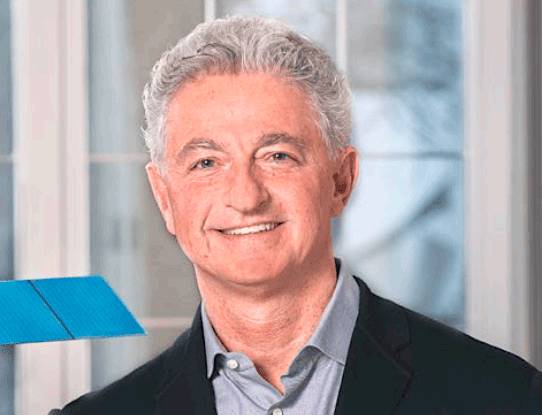 Adel Al-Saleh. (Source: SES)
Adel Al-Saleh. (Source: SES)
LA PLATA, Maryland — Satellite fleet operator SES’s new chief executive said the possibility of investing in an SES-owned LEO constellation is no longer a taboo but that the company remains doubtful about the economics of a global LEO constellation.
He said the company’s O3b mPower high-throughput constellation of satellites in medium-Earth-orbit (MEO) offer a much quicker way to provide global coverage — which it does not now offer — and that expanding mPower is a first priority.
But in a Feb. 29 investor call, Chief Executive Adel Al-Saleh acknowledged that SES’s current fleet of GEO and MEO satellites cannot cover all customer requirements — one reason why SES entered a partnership with SpaceX Starlink LEO constellation for maritime customers, the first being Virgin Voyages.
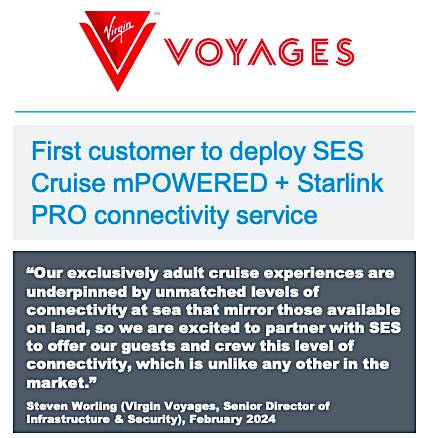 (Source: SES)
(Source: SES)
Al-Saleh insisted that the Starlink tie-in, like all SES dealings with outside companies, is profitable for SES.
“Every partnership we launch has to be accretive to us,” Al-Saleh said.
“The idea is not to have a war between us and our competitors. We are focused on our clients and if a combination between us and a competitor makes a lot of sense for the client and gives a positive return to us, an accretive deal, then we will do it. We would not do a deal that takes away margin from us or abuses our opportunity with the client.
“That’s how we did the Starlink partnership and will do other partnerships. We have other partnerships that we didn’t mention today, with our competitors, the incumbents in the marketplace. So this is not unique for us. We know how to do these things,” Al-Saleh said.
Takeaways from SES’s Feb. 29 year-2023 financials and earnings call
— SES confirmed that the mPower service, targeting high-end corporate as well as military users, will enter commercial operations in April with the six defective satellites now in orbit.
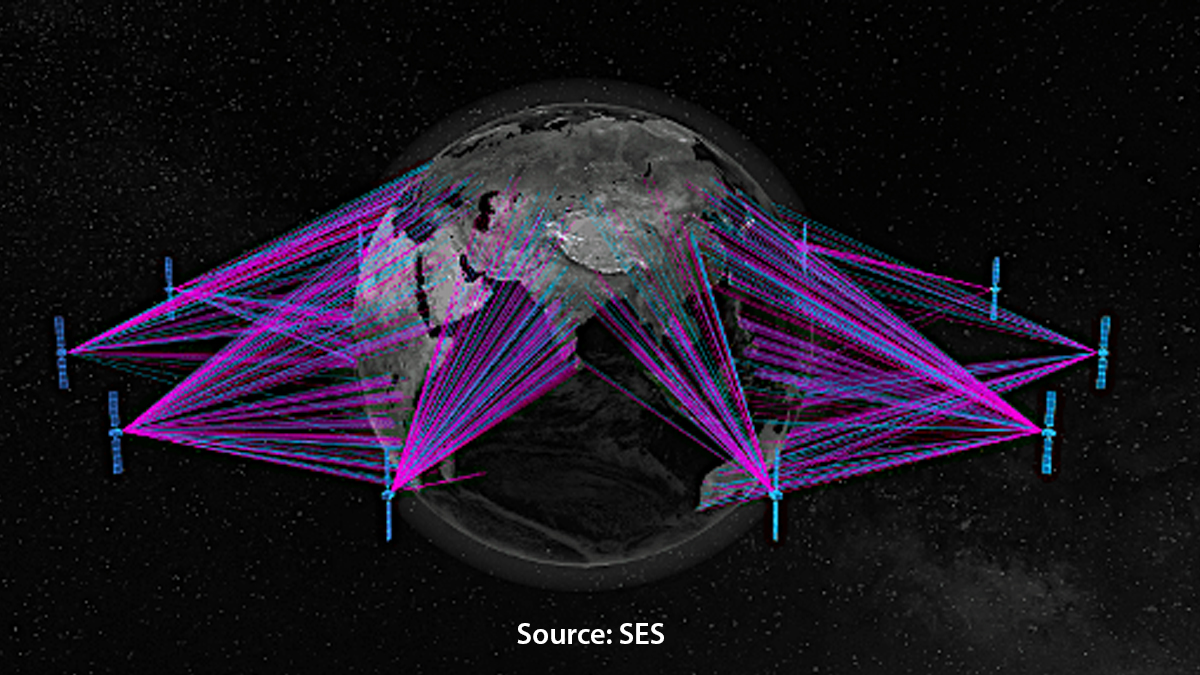 SES’s O3b mPower constellation. (Source: SES)
SES’s O3b mPower constellation. (Source: SES)
The Boeing-built mPower spacecraft have a power-supply defect that will reduce their operating lives and result in a loss of at least some of their predicted capacity but are otherwise fit for users’ needs.
Boeing has reworked future mPowers after discovering the power defect. The seventh and eighth models are scheduled for launch late this year, with three more to launch in 2025.
Once the defect’s extent was assessed, Boeing and SES agreed to divide the cost of building two more mPower spacecraft, bringing the constellation to 13 satellites. These last two are scheduled for launch in 2026.
Insurance claim for $472 million against defects on four O3b mPower satellites
SES has filed an insurance claim for $472 million with its insurance underwriters for the first four satellites but has yet to file a formal proof of claim.
“Discussions have started with our insurers,” SES Chief Financial Officer Sandeep Jalan said. “While we are convinced of the merit and validity of the claim, the timing and outcome of such negotiations are hard to to give with precise guidance.”
SES launched mPowers five and six to be able to start commercial service despite their known defects. These two satellites are not part of the insurance claim.
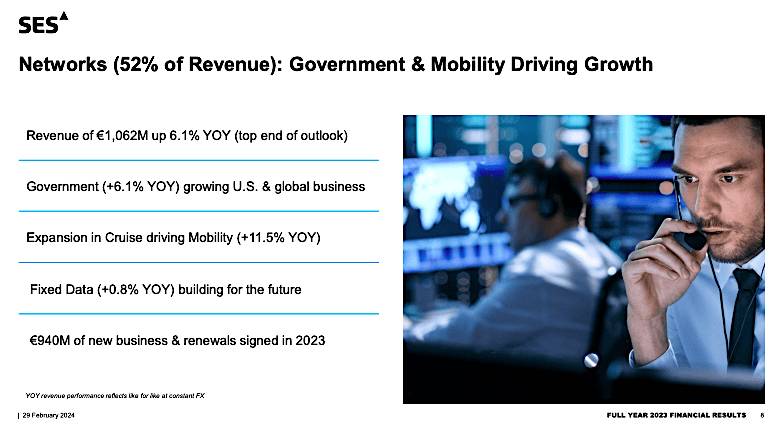 SES’s Networks business in 2023 accounted for 52% of total SES revenue. The company’s video business fell by 4.4%. SES is counting on the entry into service of its O3b mPower satellite constellation to propel the company’s growth starting this year. (Source: SES)
SES’s Networks business in 2023 accounted for 52% of total SES revenue. The company’s video business fell by 4.4%. SES is counting on the entry into service of its O3b mPower satellite constellation to propel the company’s growth starting this year. (Source: SES)
Possible expansion of O3b mPower for polar coverage
Al-Saleh suggested that SES plans to expand mPower for a “pole to pole” capability. The current mPower fleet is in inclined orbit, serving geographies between 45 degrees north and 45 degrees south. Expanding the constellation to offer fully global coverage, likely to appeal to the U.S. and other SES governments’ militaries, has long been debated.
With the U.S. Defense Department expanding its use of satellites and its use of commercial satellite capacity, the argument for making mPower a global fleet, reducing some of the advantages of a LEO constellation, appears stronger.
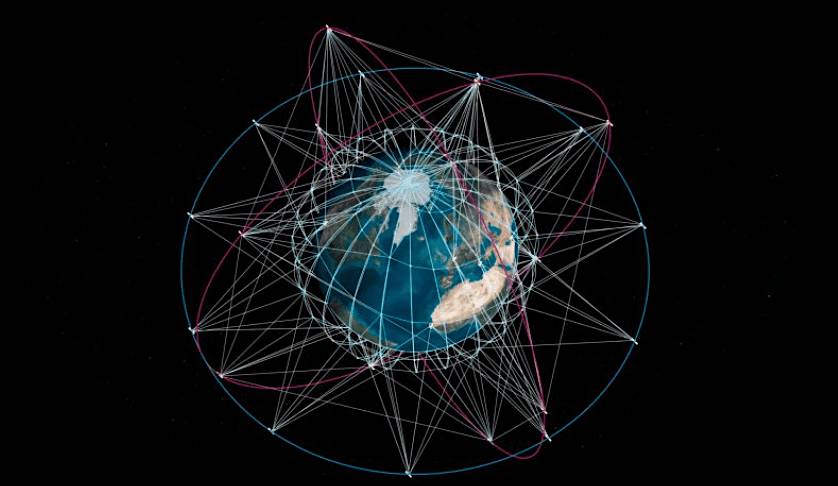 The Iris2 multi-orbit secure connectivity network. (Source: SpaceRise consortium)
The Iris2 multi-orbit secure connectivity network. (Source: SpaceRise consortium)
— SES is part of a multi-company consortium, called SpaceRise, that is negotiating with the European Commission to build the Iris2 multi-orbit constellation of satellites for secure government communications. SES is one of several companies, including fleet operators Eutelsat and Hispasat, that have said they are willing to co-invest with the Commission.
Al-Saleh said SES remains “fully committed” to Iris2 but that the business case is complicated and its schedule still unclear.
“It is not easy, because it includes many different partners, and we need to make sure the program does deliver on what the European Union is looking for, which is a sovereign, high-end, latest-technology constellation, which we support 100%.
“A lot of our business does sit in the overall government sovereign space, Lux and Nato, US and many other nations. So we believe in the project. It’s not clear when and how it’s going to conclude.”
March 1 deadline for Iris2 best-and-final offer from SpaceRise consortium
The Commission had set a Feb. 14 deadline for submission of the SpaceRise consortium’s best and final offer (BAFO). That schedule has slipped, with the new deadline March 1.
Asked to comment on Iris2’s schedule, Catherine Kavvada, director for secure and connected space at the Commissions’ DG-Defis directorate for defense and space, said in a Feb. 29 statement:
“The deadline for the BAFO expires tomorrow, 1 March. Once the consortium submits its BAFO, it is up to the Tender Evaluation Board to evaluate its content in full autonomy. Hence, neither I nor others can either comment or speculate on progress or the outcome of such evaluation.
“The Commission is fully committed to the process and convinced of the benefit for all the involved stakeholders.”
Iris2 program still too unclear to include in 2025-28 capex estimate
Al-Saleh said an Iris2 investment is not included in SES’s 2025-2028 capex forecast because of the unknowns. But he stressed that Iris2, like the Starlink partnership and other SES investments, must meet the company’s requirement for an internal rate of return (IRR) of at least 10%.
“It’s a sizable investment,” Al-Saleh said. “It has its own business case that we’re working on. It has its own elements of IRR that we’re looking at. But it’s uncertain whether or not and how, because the phasing, exactly when it will start, depending on when the Commission decides to move forward.”
The development of Iris2 is certain to play a role in SES’s view of future LEO opportunities. Iris2 is designed as a public-private partnership that allows industrial investors to make a profit by selling Iris2 capacity not needed by the primary EU government users.
